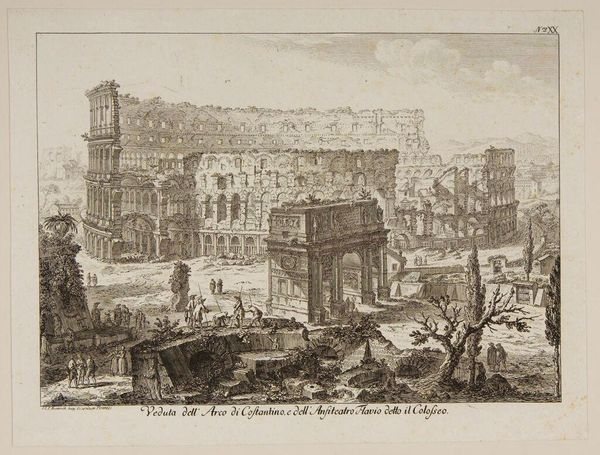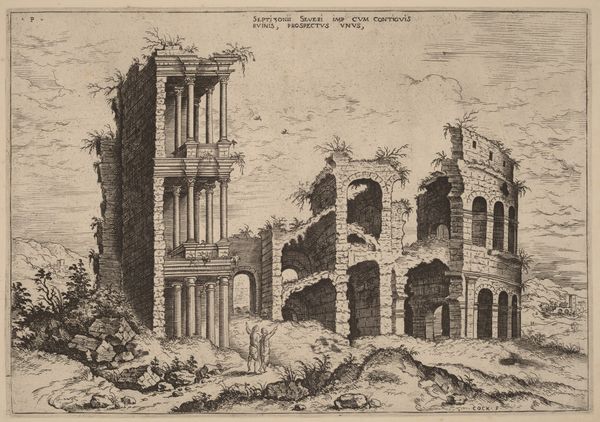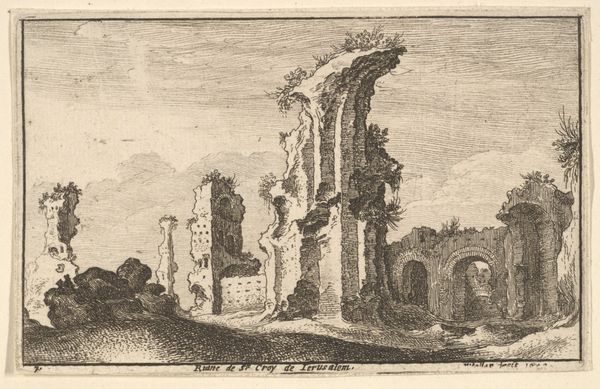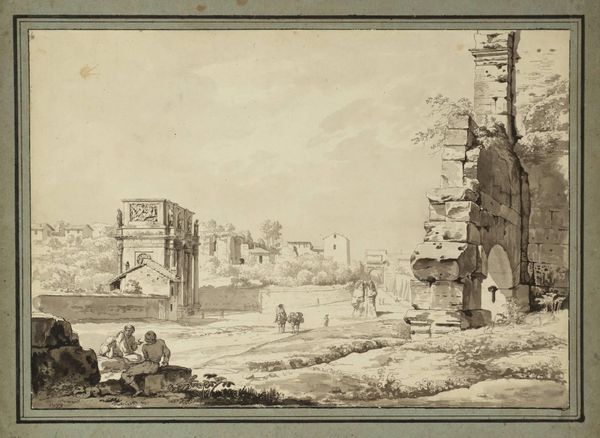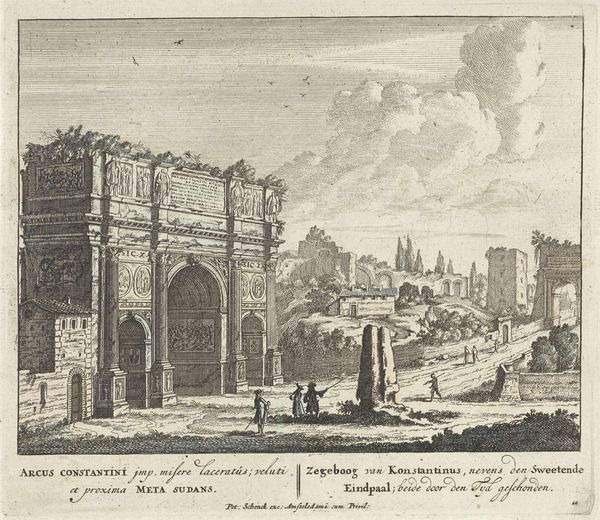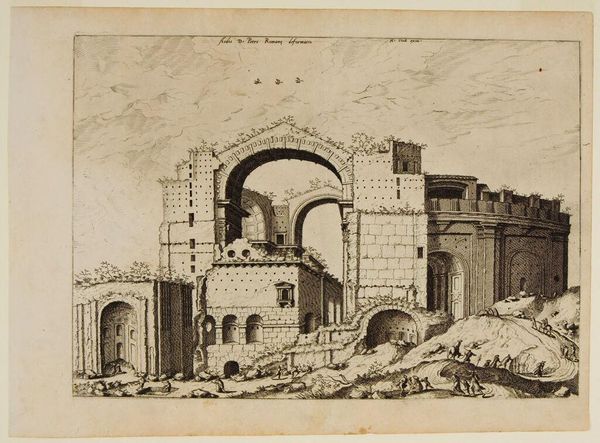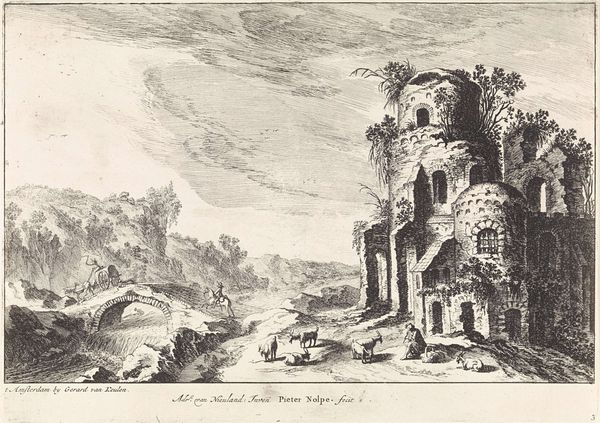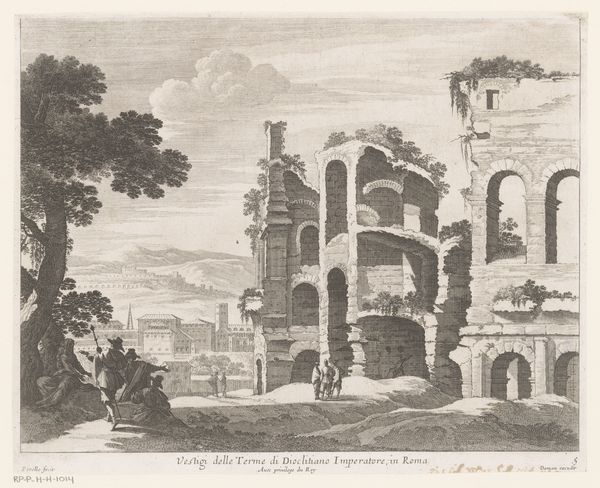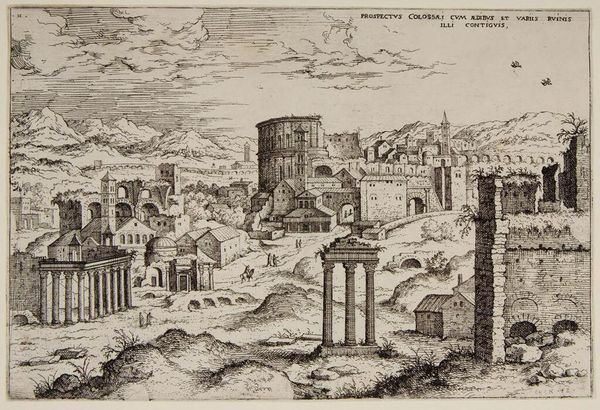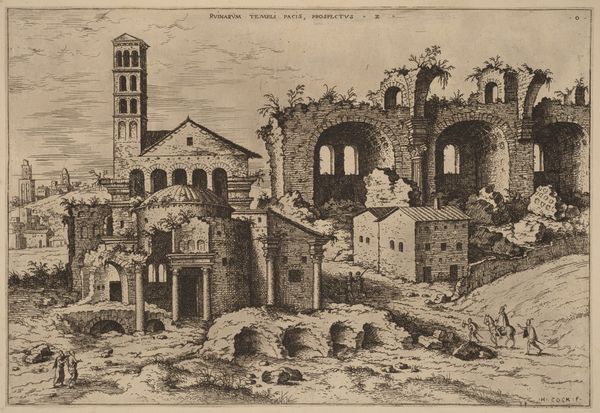
print, etching, engraving, architecture
# print
#
etching
#
landscape
#
classical-realism
#
perspective
#
form
#
romanesque
#
line
#
cityscape
#
history-painting
#
engraving
#
architecture
#
realism
Dimensions: height 163 mm, width 193 mm
Copyright: Rijks Museum: Open Domain
This print shows the Temple of Castor and Pollux in Rome, rendered in ink on paper by an anonymous artist. It's an etching, meaning the artist covered a copper plate with a waxy ground, drew this composition into the wax, and then bit the plate in acid. The lines you see are actually delicate valleys in the metal, which hold the ink. The printmaking process is intrinsically linked to reproduction. This image wasn't made to be unique, but rather to circulate. Look closely, and you'll see the marks of skilled labor. But the artist's hand is only part of the story; the printer, the paper maker, the distributors – all contributed to making this image available to a wide audience. Prints like this fueled a growing market for images, democratizing access to art and knowledge. It challenges our notions of uniqueness and authorship, reminding us that even in art, production is often a collaborative, and a commercial, endeavor.
Comments
No comments
Be the first to comment and join the conversation on the ultimate creative platform.
